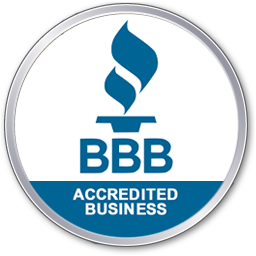Executive Summary
- High humidity indicates a significant amount of water vapor in the air that can give fungi like mold the moisture they need to grow and multiply.
- Regions in the Pacific Northwest, such as Portland, Oregon, experience their highest humidity levels during cool winters, making mold growth prevalent in months like December.
- To prevent mold growth, reduce moisture in your home by using a dehumidifier, repairing water leaks, ventilating rooms, and checking your insulation.
- Areas of homes with high moisture levels, such as bathrooms, basements, and attics, are especially prone to mold growth—routine professional inspections can keep these areas safe.
Abating Mold Growth in High Humidity
High-humidity environments hold a significant amount of water vapor in the air, giving mold the moisture it needs to survive and spread its spores for reproduction. Moisture problems are common in bathrooms, basements, attics, and poorly ventilated rooms, putting them at a higher risk of mold growth.
Mold exposure can cause bodily irritations, respiratory issues, and fever-like symptoms. To avoid health complications, you should be proactive and limit humidity to prevent mold growth. Minimize moisture in your home by using dehumidifiers, ventilating rooms, and repairing water leaks or broken insulation components.
In Portland, Oregon, and other areas of the Pacific Northwest, humidity levels are at their highest during cool winter months like December, increasing the prevalence of mold problems. Skilled environmental consulting and remediation companies like Alpha Environmental can survey properties in the greater Portland area and abate mold growth as necessary, helping you keep your property safe and comfortable.
Why Does Mold Grow in High-Humidity Conditions?
Humidity signifies how much moisture is in the air, and, like all living things, mold requires water to grow. So, high-humidity, oxygenated settings allow mold to grow on nearby organic materials like food, dirt, and certain building materials, such as wood, insulation, and carpets.
Like most forms of fungi, mold reproduces using tiny spores that are undetectable to the naked eye. However, as mold grows on surfaces, such as walls, floors, ceilings, and furniture, it can manifest as visible patches that are fuzzy, slimy, or discolored.
Visually identifying mold is not always possible. Other indicators include stale or musty odors, peeling wallpaper, and unusual pet behavior. Mold can also cause a variety of fever-like symptoms for the building’s inhabitants, including:
- Respiratory issues
- Fatigue
- Headaches
- Dizziness
- Nausea
In addition to raising the risk of health problems, mold can weaken your building’s construction by feeding on materials like wet wood. Identifying problem areas in your property is vital to catching mold growth before it gets out of hand.
Identifying Problem Areas
Certain parts of homes with poor ventilation or excessive water use can serve as breeding grounds for mold. The most common places where mold growth can be found are:
- Bathrooms – Showers, baths, and sinks can generate high levels of moisture that facilitate mold growth.
- Basements – Due to the lack of windows and limited ventilation, basements have high humidity levels that promote mold reproduction.
- Crawl spaces – Crawl spaces are usually not thoroughly ventilated and can feature dirt floors that encourage mold development.
- Kitchens – Sinks, dishwashers, and refrigerators can produce excessive moisture that supports mold growth.
- Attics – Roof leaks, inadequate ventilation, and faulty insulation in attics can exacerbate mold reproduction.
- Laundry rooms – Washing machines and utility sinks can produce enough humidity to incite mold development.
- Closets – Potential clutter and the absence of ventilation can restrict airflow in closets, leading to moisture accumulation and mold growth.
As you survey these areas of your home, look for signs of moisture buildup. Peeling paint, cracking interior finishes, and condensation on windows during winter are all signs of excessive humidity.
Recognizing and regularly checking the portions of your property prone to mold and moisture accumulation can provide early detection. However, mold growth is not always caught by untrained individuals. For accuracy and peace of mind, it is crucial to have an environmental professional perform routine mold inspections.
Keep Your Property Free from Mold
Mold poses risks to your health and property. Alpha Environmental provides expert remediation and removal to protect you and your home.
Stopping Mold Growth
Although unqualified individuals shouldn’t attempt mold removal, you can take steps to stop mold growth from occurring in the first place. In general, reducing the humidity in your home will make the conditions less favorable for mold growth. The following tactics are excellent ways to reduce moisture and mold in your home.
Use a Dehumidifier
Most dehumidifiers draw in air from a room and pull it over a coil cooled to a very low temperature by a refrigeration system. The cooled coil causes the air’s water vapor to condense, and the liquid water falls into a collection bucket underneath.
A dehumidifier reduces humidity in a room by extracting liquid water from the air, lowering the chances of mold growth.
Repair Water Leaks
Properly patching leaks in plumbing and roofs can keep water from infiltrating vulnerable portions of your house. Repairing leaks will keep water away from organic materials like wood, which nurture mold growth.
Check Your Insulation
Ensure your insulation is functioning correctly and not being penetrated by outside forces. If there are fissures in your insulation, outdoor humidity can raise your home’s moisture levels, making your dwelling more prone to mold development.
Cool the Air in the Room
Similar to dehumidifiers, air conditioners can cool a body of air, causing condensation. By removing liquid water from the air supply through condensation, your air conditioner can reduce the humidity in your building. Having less water vapor in the air can hinder mold growth.
Use Proper Ventilation
Most ventilation systems use exhaust fans to exchange stale indoor air with fresh outdoor air. Windows are also an example of a purpose-built opening that provides ventilation. Considering moisture can quickly build up in enclosed spaces, discarding humid air and circulating fresh air throughout your property is a great way to lower the chances of mold growth.
Importance of Professional Mold Inspection
DIY mold inspection can increase your risk for exposure-induced symptoms. Plus, you could accidentally unsettle irritants and toxins into the air, further jeopardizing your IAQ. Instead, it is best to schedule professional mold testing with a trusted team of environmental consultants and remediators like Alpha Environmental.
Alpha Environmental is committed to offering safe and effective mold services to keep your property safe and inhabitable. Our team is equipped with helpful technology like hygrometers that allow us to calculate humidity in each of your rooms, helping us understand how likely mold is to grow there. In addition to remediating your mold problem, we can offer expert-level guidance to prevent mold growth.
How Alpha Environmental Can Help
Mold exposure can cause various symptoms, including bodily irritations and respiratory complications. Since mold grows in moist environments, mitigation strategies like dehumidifying and ventilating rooms can help keep mold at bay. Areas in the Pacific Northwest, like Portland, Oregon, experience their highest humidity rates during the winter, so mold prevention is crucial in months like December.
Highly qualified environmental consulting and remediation companies like Alpha Environmental can help remediate and prevent mold issues. We have been performing environmental remediation services for over 21 years, providing mold tests and abatement procedures across Portland, Oregon, and the surrounding area. We are devoted to keeping our clients’ properties safe and comfortable.
Contact Alpha Environmental today for an accurate mold test, IAQ assessment, or any other remediation services you may need.




